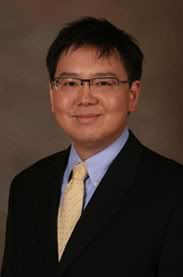The configuration of the lid crease, or the presence of a “double-eyelid”, is influenced by many factors. Many of these factors are inherited from your parents. Naturally, being Asian is a complete package of inherited genes. Which subgroup of Asian genes that makes you can make all the difference in your eye lid crease formation. For example, in Japan and Korea, it is estimated that 80% of adults are naturally of the “single-eyelid” configuration, whereas for the Chinese population, prevalence is closer to 50:50.
The appearance of the eyelid crease is influenced by many structures deep to the surface of the skin, all of which come from your parents. From deep at the level of the skull, the shape of the lateral orbital rim relative to the medial orbital rim determines the angle and width of the eyelids. The more anterior the lateral orbital rim (as in Asians), the sharper the angle of the outer corner of the open eye. The more posterior the lateral orbital rim (as in African Americans or Caucasians) the more rounded the shape of the outer canthus.
The height of the nasal bridge exerts vectored forces on the medial eyelid skin. In most people this bridge rises in early childhood and pulls the medial canthal skin towards the nose. Many children each year are brought in to see their pediatric ophthalmologist for crossing of the eyes. Quite often they are normal, and have what is called pseudo-esotropia. In most children growth of the nasal bridge needs to “catch-up” with the “excess” medial canthal skin. In many Asians however this bridge never further elevates even into adulthood. In these Asians there is inevitably a more prominent epicanthal fold which must be addressed if they choose to under-go “double-eyelid” surgery. It is my impression that this flatter nose configuration could be inherited as a single autosomal dominant gene, where half of the children might inherit it and half do not.
There are of course other tissue layers that significantly differ in patients with and without a “double-eyelid”. A fibrous band of tissue called the tarsus, creates the firm and straight edge of your eyelid margin and can be seen when you pull down your lower lid or flip your upper eyelid inside out. The height of the tarsus averages over 10mm in the upper eyelid in most non-Asians. In Asians however, the upper lid tarsus is slightly shorter averaging closer to 8mm. It is also indirectly from the upper edge of the tarsus where fine fibrous attachments (from the levator aponeurosis) penetrate the overlying orbicularis muscles to form a connection to the eyelid skin. A microstructure analysis of Chinese eyelids has found that these fibers are significantly stronger in patients born with the “double-eyelid” configuration than in patients who either gradually developed the crease or those who have the single eyelid configuration.
In Asians there is an additional layer of pretaral fat that lies below the orbicularis muscle with a lower insertion of the orbital septum, as well as a thicker layer of skin. This makes the pre-tarsal Asian eyelid significantly thicker than in non-Asians. (This thicker eyelid is believed to have evolved for the colder Northern Asian populations, to shield the eyes from cold, wind and glare off of snow.) It is the relative length and strength of the attachments between the skin to tarsus vs. the thickness of the surrounding eyelid tissues that ultimately determines whether on not a crease will form. This also explains why sometimes morning eyelid puffiness can induce a temporary crease which goes away later on in the day.
The bottom line is that the Asian lid crease formation is most certainly inherited, but precisely how is somewhat complicated. That said, I believe that the cumulative inherited features of the periocular anatomy of non-Asians will have a “dominant” effect on the formation of the “double-eyelid”. For parents planning to have Hapa children I would “bet-the-farm” on your child having the “double-eyelid” at birth.
One last observation is the similarity between the periocular anatomy of Asians and the Bushmen in Africa. Is this the result of a similar environmental pressures to protect the eyes in two distict populations or is there data in The Genographic Project that can show a more recent genetic link?

